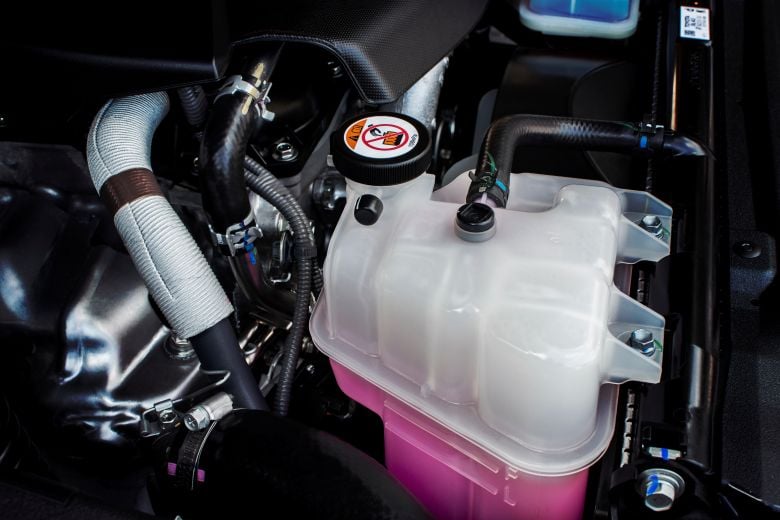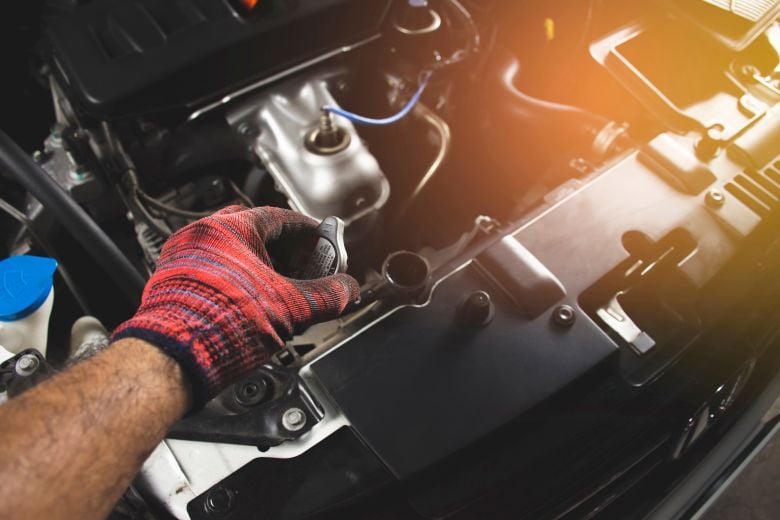
How to Maintain Your Car's Cooling System
- Vehicle Maintenance
- PEAK
- July 15, 2025
Learn how to maintain your car's cooling system with this guide.
Your car's cooling system is the key to keeping your engine within safe temperature ranges. Engines generate a lot of heat as they work, and that heat has to be properly managed to avoid serious problems like:
- Warping, cracking, and piston damage
- Head gasket failures
- Loss of engine power
- Full-on engine seizure
As a start, you'll want to make sure your coolant reservoir always contains enough fluid to maintain safe internal operating temperatures. However, there's more to caring for your car's cooling system than periodic top-ups. This guide explains the essentials of cooling system maintenance, with insights from Old World Industries' product marketing manager, Michael Marcangelo.


Cooling system basics
Most conventional vehicles have liquid-cooled systems. Here's a simplified breakdown of how they work:
- A specialized coolant fluid (also known as antifreeze) gets pumped from its reservoir through a radiator and into the engine.
- The coolant circulates through the main engine block, absorbing the heat that the engine generates as it works.
- Returning to the radiator, the coolant fluid passes through a fan system that removes heat from the fluid and eliminates it from the engine.
- The cooled fluid recirculates back into the engine block, repeating this process continuously as your car runs.
For the system to work properly, your car needs the correct amount of coolant fluid. The fluid must also be uncontaminated and chemically intact. This ensures your coolant can regulate your engine's internal temperature properly and prevent corrosion.
Also, the system's thermostat, pumps, belts, and hoses all need to be working properly. You or your service technician should periodically inspect these components to make sure they're in good shape.
Regular DIY maintenance tasks for your car's cooling system
First, let's look at four essential car engine cooling system maintenance tasks you can perform yourself:
Check your coolant levels
Take a look in your coolant reservoir at least once every 3–6 months, or whenever you perform regular seasonal maintenance, to make sure you have enough coolant fluid in your system.
Periodic checks also help protect your thermostat from failure, which can happen more easily than you might think due to your thermostat's sensitivity.
Here's what to do:
- Start with your car parked on flat ground, and with the engine cold.
- Locate and open your coolant reservoir. If you can't find it, your owner's manual will tell you where to look.
- Notice the scale on the side of the reservoir. It will have two key markings: F for full, and L for low.
- If your coolant fluid is near, at, or below the L line, fill the reservoir back to the F line. Use a funnel to prevent spills.
See below (in the "Selecting the right coolant for your car" section) for tips on how to choose the right coolant for your vehicle.
Also, remember that you must fill your reservoir with a 50/50 mix of coolant concentrate and water. Never pour concentrated coolant directly into your system, as this can cause major performance losses and engine damage.


Perform a visual inspection of your car's cooling system
Whenever you check coolant levels, you should also inspect the system's visible components. Look for loose connections or obvious signs of wear on your belts, pumps, and hoses.
If you need to replace any of these components, you can DIY it by following the recommendations in your owner's manual. Otherwise, bring your vehicle to a technician for professional service.
Test your coolant's condition
We recommend testing your coolant at least twice a year: once at the beginning of summer, and again at the beginning of winter. Your cooling system works the hardest during these seasons due to the temperature extremes they bring.
Follow these steps to test your coolant:
- Start with your car parked on flat ground, and with the engine cold.
- Open your coolant reservoir or radiator to gain access to the coolant fluid.
- Use an antifreeze tester kit to draw a coolant sample out of your engine.
- Hold the filled-up test kit up to a light source. If you notice any particles, sediment, or rust-brown discoloration, it's time to do a flush and fill.
Change your coolant as required
Flush and fill service involves draining all the coolant from your system and completely replacing it. You should perform a flush and fill anytime your fluid test indicates it's necessary, or at intervals specified in your owner's manual.
Note that flush and fill guidance varies widely among manufacturers. Some recommend it every two years or 36,000 miles, while others say every 10 years or 200,000 miles. In any case, you should follow manufacturer recommendations even if your coolant fluid appears to pass the basic test outlined above.
If you want to perform a DIY flush and fill, this PEAK Auto video tutorial will walk you through the steps. When you're done, make sure you safely dispose of your used coolant.
Expert tips for DIY safety
Michael weighed in with an important safety tip you should always follow when inspecting or working with your car's cooling system.
"I would warn people against trying to directly open the radiator, and against directly filling the radiator with coolant fluid during a standard maintenance check," Michael says. "The fluid can be extremely hot and a person can get scalded by antifreeze shooting out of a hot radiator."
There's an easy way to avoid this situation. "When checking coolant levels, you shouldn't go directly to the radiator," Michael advises. "Instead, you should initially look at your coolant reservoir."
Select the right coolant for your car
If you're not sure what kind of coolant fluid your car needs, Michael has some advice. "Always refer back to your owner's manual for guidance," he says. "Your owner's manual is going to dictate the type of chemistry or coolant that you should specifically use in your vehicle."
As a safe default choice, you can use an all-makes, all-models product. Look for clear labeling that indicates the coolant is compatible with any vehicle. Such products contain standard organic acid technologies (OATs) that can be used "across the board," as Michael puts it.
PEAK offers several products in this category, including:
- All Vehicles coolant, available in both pre-diluted and concentrated forms.
- Global Lifetime coolant, which offers guaranteed lifetime protection for cars manufactured anywhere in the world.
- Titanium coolant, which uses a proprietary chemical blend to clean your cooling system while providing advanced corrosion protection.
You can also get coolants with specially formulated chemical blends that deliver specific performance characteristics. "For the more discerning consumer that wants to match the type of coolant that was put in the car originally, you would shop for more of a premium product that would be specific to the original equipment technology," says Michael.
If you're in that consumer category, Michael recommends a PEAK original equipment technology coolant blend. "These coolants have the technology used by the original equipment manufacturer," he explains. "PEAK has these products available in 11 different formulations."
These 11 premium formulations break down into three main categories, including coolants for Asian-made vehicles, European-made vehicles, and North American-made vehicles. Look for your vehicle manufacturer's name on the bottle to ensure its compatibility with your car.
Keep cool and enjoy driving!

